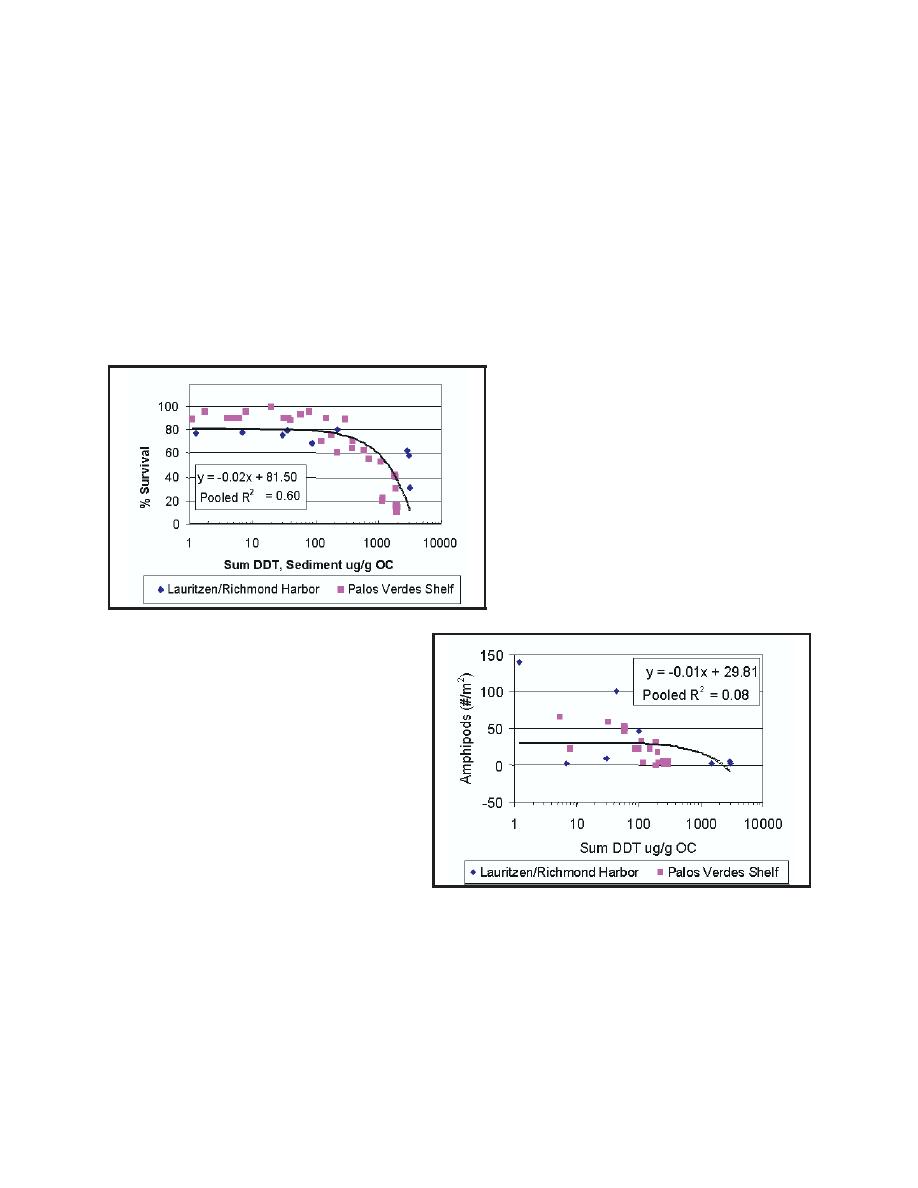 |
||
|
|
||
|
Page Title:
Figure 3. Mean survival of E. estuarius in Lauritzen Channel/Richmond Harbor sediment and R. abronius n Palos Verdes Shelf se... |
||
| |||||||||||||||
|
|
 ERDC TN-DOER-C23
September 2001
ΣDDT concentration and mortality of the amphipod E. estuarius in 10-day laboratory sediment
toxicity tests (Figure 3). An analysis of amphipod abundance along the same contamination gradient
failed to show a statistically significant correlation (R2 = 0.19, p = 0.23 for the Lauritzen
Channel/Richmond Harbor sediments) (Figure 4). One amphipod species, Grandidiarella japon-
ica, showed increasing abundance with increasing ΣDDT concentration. It was not clear why the
abundance of G. japonica was positively correlated with sediment toxicity and ΣDDT concentra-
tions since this species shows similar sensitivity in aqueous exposures to reference toxicants
compared with other amphipod species. It is possible, although not suggested by the authors, that
the benthic communities present at the sites may have adapted to contaminant levels in these
sediments. If so, the potential for adaptation may present a challenge to the correlative/observational
approach.
Figure 3. Mean survival of E. estuarius in
Lauritzen Channel/Richmond
Harbor sediment and R. abronius
in Palos Verdes Shelf sediment in
relation to the carbon-normalized
ΣDDT concentration in sediment
(OC = organic carbon) (adapted
from Swartz et al. 1994)
Figure 4. Mean abundance of amphipods
(excluding G. japonica) in relation
to ΣDDT normalized to organic
carbon for Lauritzen/Richmond
Harbor and Palos Verdes Shelf
sediments (adapted from
Swartz et al. 1994)
Finally, pooling data with their earlier studies of a contamination gradient on the Palos Verdes Shelf,
Swartz et al. (1994) showed similar relationships for sediment toxicity (Pooled R2 = 0.60, p <<
0.001) and amphipod abundance (Pooled R2 = 0.08, p = 0.11) compared with organic carbon
normalized ΣDDT sediment concentrations (Figures 3 and 4) (Swartz et al. 1994).
McGee and Fisher (1999) and McGee et al. (1999) also used the correlative approach to evaluate
the relationship between sediment-associated contaminants, abundance of the amphipod L. plumu-
losus, and toxicity to L. plumulosus in 10-day laboratory-based bioassays. The study evaluated
8
|
|
Privacy Statement - Press Release - Copyright Information. - Contact Us - Support Integrated Publishing |